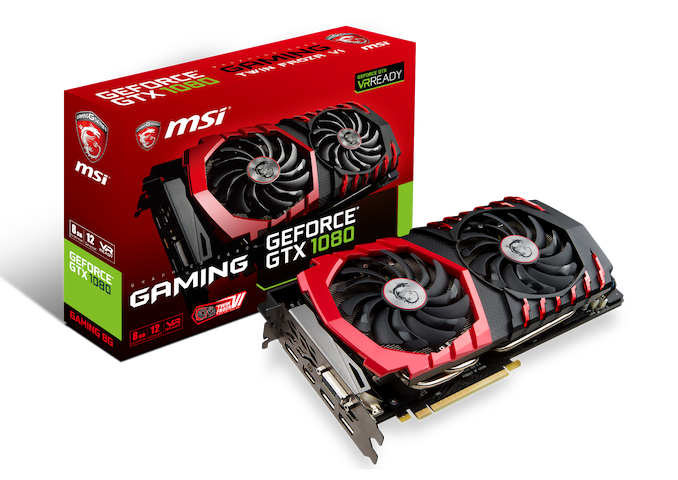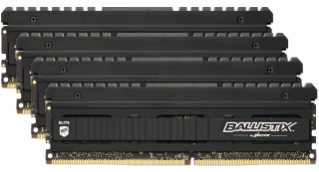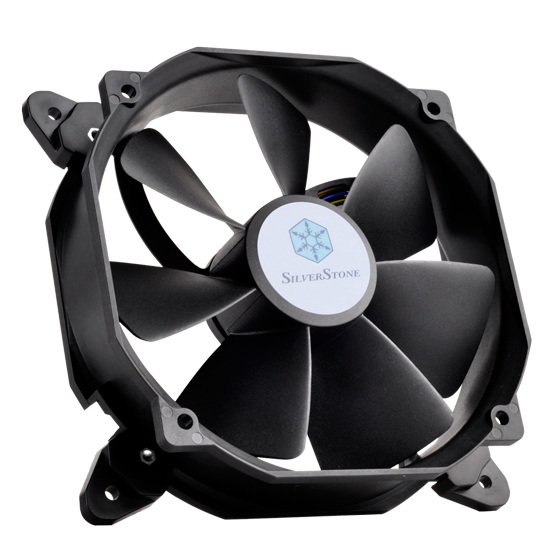The ASUS Pro WS X570-Ace Review: x8x8x8 with No RGB
by Gavin Bonshor on August 12, 2019 9:00 AM ESTBoard Features
The ASUS Pro WS X570-Ace sits in the mid-range of the X570 product stack with a price of $380 and combines professional features such a Realtek RTL8117 Gigabit NIC that offers hardware-level access control for server functions with the ASUS Control Center Express application; this is assisted by an additional Ethernet port controlled by an Intel I211-AT Gigabit NIC. A Realtek ALC1200S HD audio codec handles the onboard audio and includes an EMI shield and is set on a separate area of the PCB. The solid-looking 12+2 phase power delivery includes an elegant and large aluminium heatsink and draws its power from a single 8-pin 12 V ATX CPU power input. Providing power to the rest of the board is a single 24-pin 12 V ATX motherboard power input. One of the standout features comes in the way of the full-length PCIe 4.0 slots which run at x16, x8/x8, and x8/x8/x8.
| ASUS Pro WS X570 Ace ATX Motherboard | |||
| Warranty Period | 3 Years | ||
| Product Page | Link | ||
| Price | $380 | ||
| Size | ATX | ||
| CPU Interface | AM4 | ||
| Chipset | AMD X570 | ||
| Memory Slots (DDR4) | Four DDR4 Supporting 128 GB Dual Channel Up to DDR4-4400 ECC Memory Support |
||
| Video Outputs | 1 x HDMI 1.4b 1 x DisplayPort 1.2 |
||
| Network Connectivity | Realtek RTL8117 Gigabit Intel I211-AT Gigabit |
||
| Onboard Audio | Realtek S1200A | ||
| PCIe Slots for Graphics (from CPU) | 2 x PCIe 4.0 x16 (x16 or x8/x8) | ||
| PCIe Slots for Other (from PCH) | 1 x PCIe 4.0 x8 1 x PCIe 4.0 x1 |
||
| Onboard SATA | Four, RAID 0/1/10 | ||
| Onboard M.2 | 1 x PCIe 4.0 x4/SATA 1 x PCIe 4.0 x2 1 x U.2 PCIe 3.0 x4 |
||
| USB 3.1 (10 Gbps) | 4 x Type-A Rear Panel 1 x Type-C Rear Panel 1 x Type-C Header |
||
| USB 3.0 (5 Gbps) | 2 x Type-A Rear Panel 2 x Header (two ports) |
||
| USB 2.0 | 2 x Type-A Rear Panel 2 x Header (four ports) |
||
| Power Connectors | 1 x 24-pin ATX 1 x 8pin CPU |
||
| Fan Headers | 2 x CPU (4-pin) 1 x AIO Pump (4-pin) 3 x System (4-pin) |
||
| IO Panel | 4 x USB 3.1 G2 Type-A 1 x USB 3.1 G2 Type-C 2 x USB 3.1 G1 Type-A 2 x Network RJ45 (Realtek/Intel) 5 x 3.5mm Audio Jacks (Realtek) 1 x S/PDIF Output (Realtek) |
||
On the rear panel is a fairly impressive selection of inputs including four USB 3.1 G2 Type-A, one USB 3.1 G2 Type-C, and two USB 3.1 G1 Type-A ports. A further two USB 3.1 G1 Type-A and four USB 2.0 ports can be accessed through the use of internal USB headers. For users looking to use compatible Ryzen APUs, there is also an HDMI 1.4b and DisplayPort video output. Cooling support is standard for an ATX model as the ASUS Pro WS X570-Ace has six 4-pin headers split into two for CPU fans, one for an AIO pump, and four for system fans. There are two PCIe 4.0 M.2 slots, with the top slot operating at PCIe 4.0 x4, and the second slot at just PCIe 4.0 x2. The solitary U.2 slot supports PCIe 3.0 x4, and the four SATA ports feature support for RAID 0, 1, and 10 arrays.
Test Bed
As per our testing policy, we take a high-end CPU suitable for the motherboard that was released during the socket’s initial launch and equip the system with a suitable amount of memory running at the processor maximum supported frequency. This is also typically run at JEDEC subtimings where possible. It is noted that some users are not keen on this policy, stating that sometimes the maximum supported frequency is quite low, or faster memory is available at a similar price, or that the JEDEC speeds can be prohibitive for performance. While these comments make sense, ultimately very few users apply memory profiles (either XMP or other) as they require interaction with the BIOS, and most users will fall back on JEDEC supported speeds - this includes home users as well as industry who might want to shave off a cent or two from the cost or stay within the margins set by the manufacturer. Where possible, we will extend out testing to include faster memory modules either at the same time as the review or a later date.
While we have been able to measure audio performance from previous Z370 motherboards, the task has been made even harder with the roll-out of the Z390 chipset and none of the boards tested so far has played ball. It seems all USB support for Windows 7 is now extinct so until we can find a reliable way of measuring audio performance on Windows 10 or until a workaround can be found, audio testing will have to be done at a later date.
| Test Setup | |||
| Processor | AMD Ryzen 3700X, 65W, $329 8 Cores, 16 Threads, 3.6 GHz (4.4 GHz Turbo) |
||
| Motherboard | ASUS Pro WS X570-Ace (BIOS 0702) | ||
| Cooling | ID Cooling Auraflow 240mm AIO | ||
| Power Supply | Thermaltake Toughpower Grand 1200W Gold PSU | ||
| Memory | 2x8GB G.Skill TridentZ DDR4-3200 16-16-16-36 2T | ||
| Video Card | ASUS GTX 980 STRIX (1178/1279 Boost) | ||
| Hard Drive | Crucial MX300 1TB | ||
| Case | Open Benchtable BC1.1 (Silver) | ||
| Operating System | Windows 10 1903 inc. Spectre/Meltdown Patches | ||
Readers of our motherboard review section will have noted the trend in modern motherboards to implement a form of MultiCore Enhancement / Acceleration / Turbo (read our report here) on their motherboards. This does several things, including better benchmark results at stock settings (not entirely needed if overclocking is an end-user goal) at the expense of heat and temperature. It also gives, in essence, an automatic overclock which may be against what the user wants. Our testing methodology is ‘out-of-the-box’, with the latest public BIOS installed and XMP enabled, and thus subject to the whims of this feature. It is ultimately up to the motherboard manufacturer to take this risk – and manufacturers taking risks in the setup is something they do on every product (think C-state settings, USB priority, DPC Latency / monitoring priority, overriding memory sub-timings at JEDEC). Processor speed change is part of that risk, and ultimately if no overclocking is planned, some motherboards will affect how fast that shiny new processor goes and can be an important factor in the system build.
New Test Suite: Spectre and Meltdown Hardened
Since the start of our Z390 reviews, we are using an updated OS, updated drivers, and updated software. This is in line with our CPU testing updates, which includes Spectre and Meltdown patches. We are also running the testbed with the new Windows 10 1903 update for AMD's Ryzen 3000 series CPUs, and X570 motherboard reviews. The Windows 1903 update improves multi-core and multi-thread performance on AMD's Ryzen processors with topology awareness meaning previous issues in regards to latency have been known to affect performance. As users are recommended to keep their Windows 10 operating system updates, our performance data is reflected with the 1903 update.


















110 Comments
View All Comments
kgardas - Monday, August 12, 2019 - link
Is it possible to disable chipset's fan or completely unmount the chipsets heatsink and replace with custom fanless solution? Thanks!kgardas - Monday, August 12, 2019 - link
I mean, this is really nice board especially for claiming official ECC RAM support, but bundled fan on chipset kills that for me.1_rick - Monday, August 12, 2019 - link
You'll probably have to skip this generation of motherboards entirely, then--I believe there's only one board of all the launch models without a fan.If you're not running a PCIe4 video card, the fan won't make enough noise for you to hear it over your case fans--I have this board and I can't hear the chipset fan at all.
kgardas - Monday, August 12, 2019 - link
There are no case fans in my case, hence my concern over this 4cm screamer.1_rick - Monday, August 12, 2019 - link
If you think it's a screamer you're wrong.TheinsanegamerN - Tuesday, September 24, 2019 - link
If you think it will stay quiet for more then 6 months, you're wrong.1_rick - Thursday, November 14, 2019 - link
Well, I got mine on 7/7 and it's still quiet 5 months and 1 week later.chaoticmass - Tuesday, June 16, 2020 - link
I purchased mine in August. I use it in a Fractal Define R5, which has nice air filters. So far, no problems with the chipset fan.Cooe - Monday, August 12, 2019 - link
It only spins up when you're seriously pushing the I/O (i.e. NVMe RAID), so you 99% of the time you'll never even hear it. But if it's simply a "no-go" factor for you, then X570 is simply off the table.Lolimaster - Wednesday, August 14, 2019 - link
x470 is a good option unless you want to go full bonkers using nvme raid savage mode.